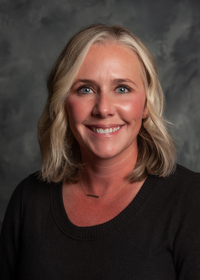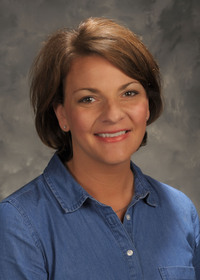Information Possibly Outdated
The information presented on this page was originally released on June 23, 1997. It may not be outdated, but please search our site for more current information. If you plan to quote or reference this information in a publication, please check with the Extension specialist or author before proceeding.
Satellite Use Offers Efficient Training
MISSISSIPPI STATE -- Hectic schedules often make people wish they could be in more than one place at a time, but technology available through Mississippi State University can make this possible.
Through video teleconferencing, university specialists can present a program once and have it sent via satellite to hundreds of sites around the state. Without leaving their community, audience members can see and ask questions of the speaker, often hundreds of miles away.
"The main advantage of teleconferencing is efficiency," said Tim Allison, MSU Office of Agricultural Communications video/teleconference producer. "We have many specialists who give the exact same program to multiple counties on a regular basis.
"If we can give a better program by teleconferencing, it makes sense to do it once and let all the counties downlink it."
In April, Dr. Marty Brunson, extension fisheries specialist, led a video teleconference on farm pond and small lake management. The program was downlinked to 19 counties and was viewed by about 350 people.
Brunson found the program cost a total of $8,635 to produce, but could have been downlinked to unlimited sites at no extra cost. Future similar programs would cost $5,530 since much of the preparation done for the first program would already be in place.
However, this amount is far below the cost of personal visits. In a typical year, Brunson averages 45 county workshops and seminars. The total yearly cost for these visits is $12,745. Any additional visits cost more money and require more time.
"Teleconferencing offers a way to deliver educational programs and meet needs among the masses with reduced effort and reduced expenses," Brunson said. "Because we can use many different presentation media, it offers a higher quality than I could deliver by taking a slide projector on the road."
A satellite teleconference allows the speaker to use resources at the television studio such as still photographs, video, graphics and even drawn illustrations. It also allows many specialists to be present, which usually is not possible to repeat at each workshop.
One of the elements making teleconferencing successful is audience/speaker interaction. By making it possible for audience members to ask questions, specialists can address specific issues important to their listeners.
"If you don't have an interactive element, you might as well record the event and mail it out," Allison said. "You've got to have the interaction to make the event successful."
Although not a very common use of satellite technology in the state, the method is popular among participants.
In a survey after the pond teleconference, all respondents said the program was beneficial and they learned new information. Ninety-one percent said the program answered most or all of their questions, and 78 percent said they liked this use of technology.
Those participants answering the survey said they were very pleased with the overall program as well as its content.
"I'm convinced this is a good medium, and I'm very, very pleased with the results of this teleconference," Brunson said. "This particular subject is well suited to teleconferencing, and I think I should do this much more often."
In the past, teleconferences have been conducted on cotton production, water quality, wetlands best management practices and caregiver training. Teleconferences planned at later dates include introductory and advanced farm pond and small lake management and an update on any changes the legislature may make to the endangered species act.



